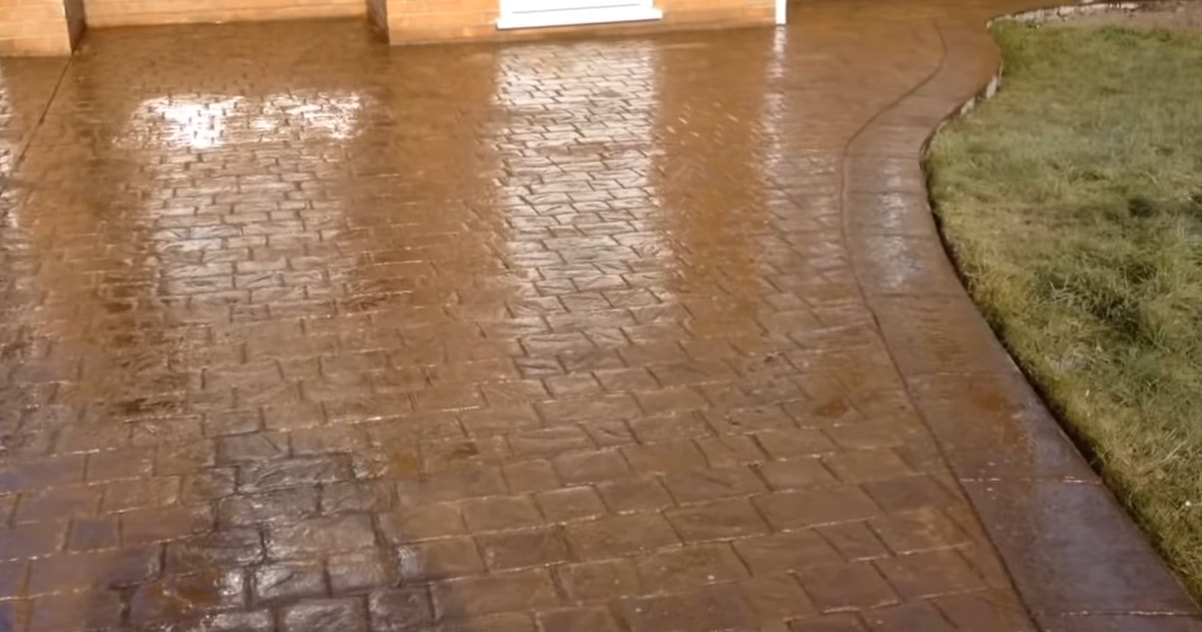Concrete Driveway Replacement, Lee's Summit, MO
|
SHOULD I SEAL CRACKS IN MY CONCRETE DRIVEWAY?
Concrete driveways are subjected to a great deal of wear and tear over the course of the year. Extreme temperature fluctuations, oil stains, shovels, and the heavyweight of vehicles all wreak havoc on concrete driveways which may lead to you needing a driveway replacement. However, with a bit of care and maintenance, you can protect your driveway all year. Concrete sealant is one of the best ways to protect your concrete from all of this wear and tear. Concrete sealant, when applied correctly, improves both the appearance and the durability of concrete. By keeping up with concrete sealing, you can avoid stains, mold, and cracking. And if your concrete already has cracks, cosmetic cracks in a driveway or walkway are simple to repair. However, do not attempt to repair cracks in the poured concrete foundation of your home. Foundation cracks are more serious and necessitate professional assessment. If your concrete is cracked, fading, or stained, it's time to repair and reseal it, especially before the harsh winter forces arrive. Consider these concrete sealing and repair tips to keep your driveway, walkway, patio, or flooring in good condition and able to withstand whatever is thrown at it. WHAT IS THE BEST WAY TO SEAL CONCRETE CRACKS? Before sealing concrete cracks, remove any debris and loose concrete with a screwdriver and then a wire brush. After that, sweep or blow out the crack with a leaf blower. Next, use concrete repair caulk, such as polyurethane concrete sealant, to fill the concrete crack. For cracks wider than ¼ inch, use a screwdriver to push foam backer rod into the crack to ½ inch below the surface, then fill the crack with concrete repair sealant. IS CONCRETE SEALER REQUIRED? Concrete sealer is a protective coating that will keep your concrete in better shape for a longer period of time. It will shield your concrete from the elements as well as stains. Cleaning de-icing salts, oil, and grease from a sealed driveway are much easier. On the other hand, De-icing salts should be avoided on concrete because they will wear down the protective coating. Instead, on icy surfaces, use sand or kitty to gain traction. Apply concrete sealer as soon as new concrete finishes curing to begin protecting it as soon as possible. The sealer will protect your concrete from a variety of damages. Acrylic sealers protect concrete from the sun's rays, rain, mildew, and mold. These sealers also enhance the colors of decorative concrete and provide a matte or gloss finish. Waterproofing sealers and other penetrating sealers form a hydrophobic barrier to keep moisture and vapor out. This is especially important during the freeze-thaw cycle because concrete cracks more easily when it absorbs water and then freezes and expands. Other penetrating sealers, such as silicates, actually strengthen the concrete by densifying it. Consider hiring professionals to repair and seal your concrete driveways and parking lots with asphalt. HOW CLEAN SHOULD CONCRETE BE BEFORE SEALING? Before sealing, the concrete should be thoroughly cleaned. Without a thorough cleaning, the sealer will seal any stains or dirt in the concrete, making them nearly impossible to remove. In addition, most stains will not adhere to the sealer. Remove any existing sealer and stains such as oil, grease, mastic, paint, mold, and mildew with a cleaner. The concrete cleaner you use will be determined by the type of stain. After cleaning, use a shop vac to remove any remaining dirt, dust, debris, or moisture. Use a pressure washer with at least 3,500 psi and a 25-degree fan tip to ensure your concrete is clean. Hold the pressure cleaner wand six to eight inches away from the surface of the concrete and sweep it over it in slow, even strokes. Allow 24 hours for your concrete to dry before applying the sealer. Fill any cracks in your concrete that need to be repaired during this time. Smooth concrete repair sealant over any cracks with a putty knife and follow the manufacturer's drying time instructions. HOW LONG DO YOU HAVE TO WAIT BEFORE YOU CAN DRIVE ON SEALED CONCRETE? Before driving on the concrete sealant, it must be completely dry. It can take up to three days for the paint to dry. However, for the most accurate drying times, check the manufacturer's instructions. HOW DO YOU REPAIR CONCRETE? Depending on the extent of the damage, there are several methods for repairing concrete. Use concrete repair sealant and patching for cosmetic cracks. However, if you have deep cracks that go all the way through the concrete, you will need to replace it. Contact Lee's Summit Concrete and Paving in Lee's Summit, MO, for assistance with repairs and advice on selecting the appropriate concrete products for your home project. When it comes to protecting your concrete driveway year-round, a little effort can go a long way. |
|
